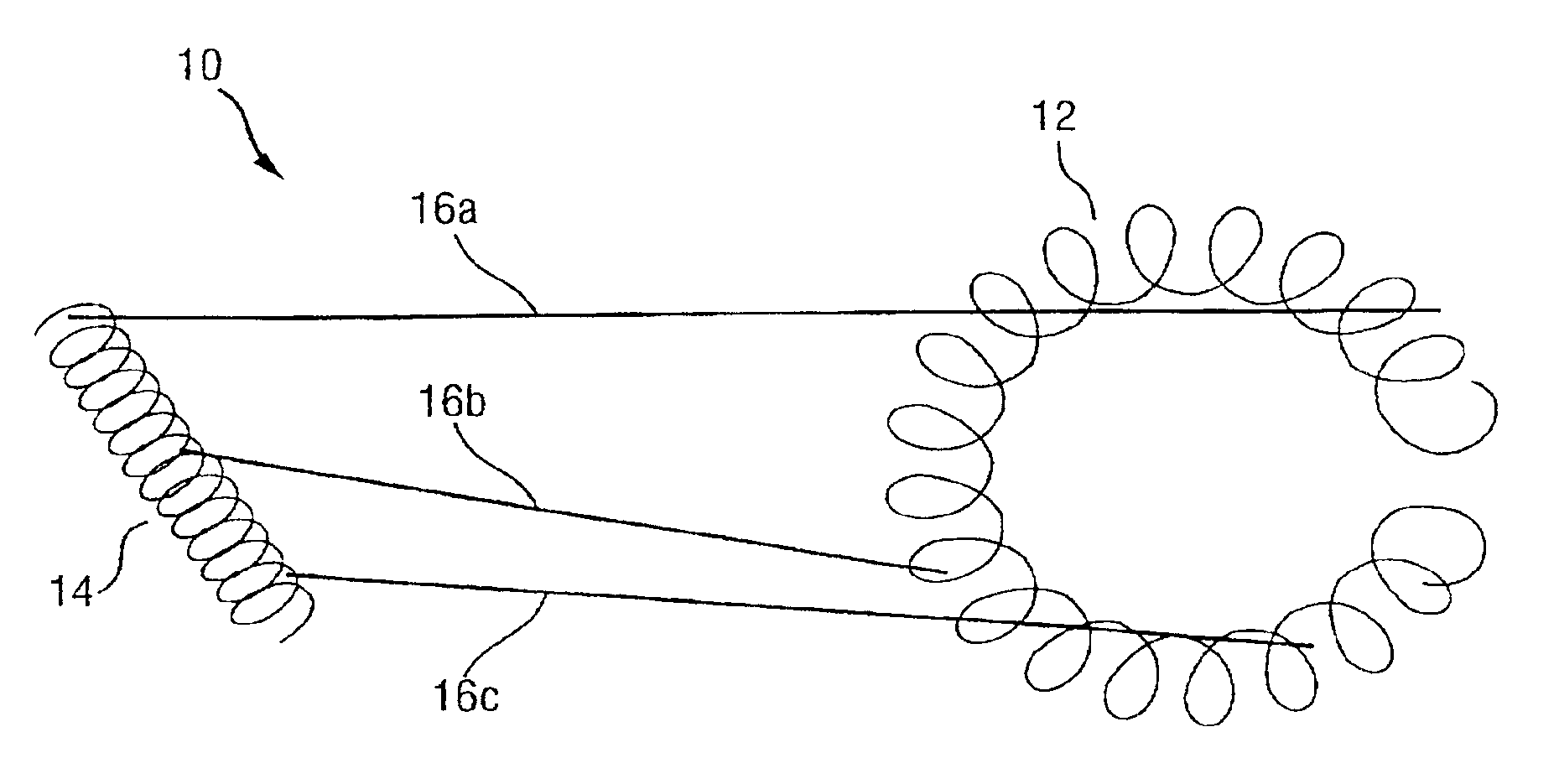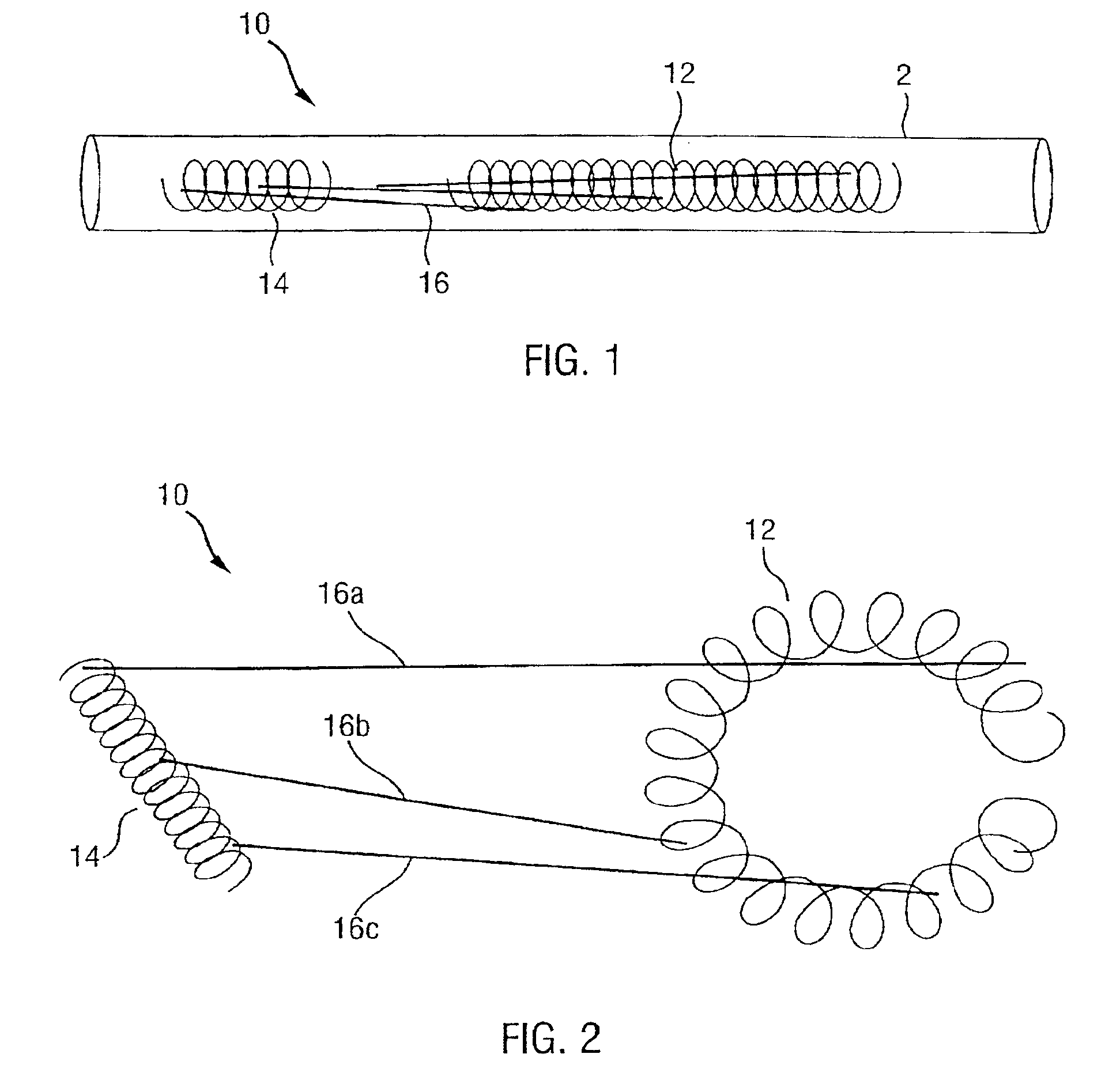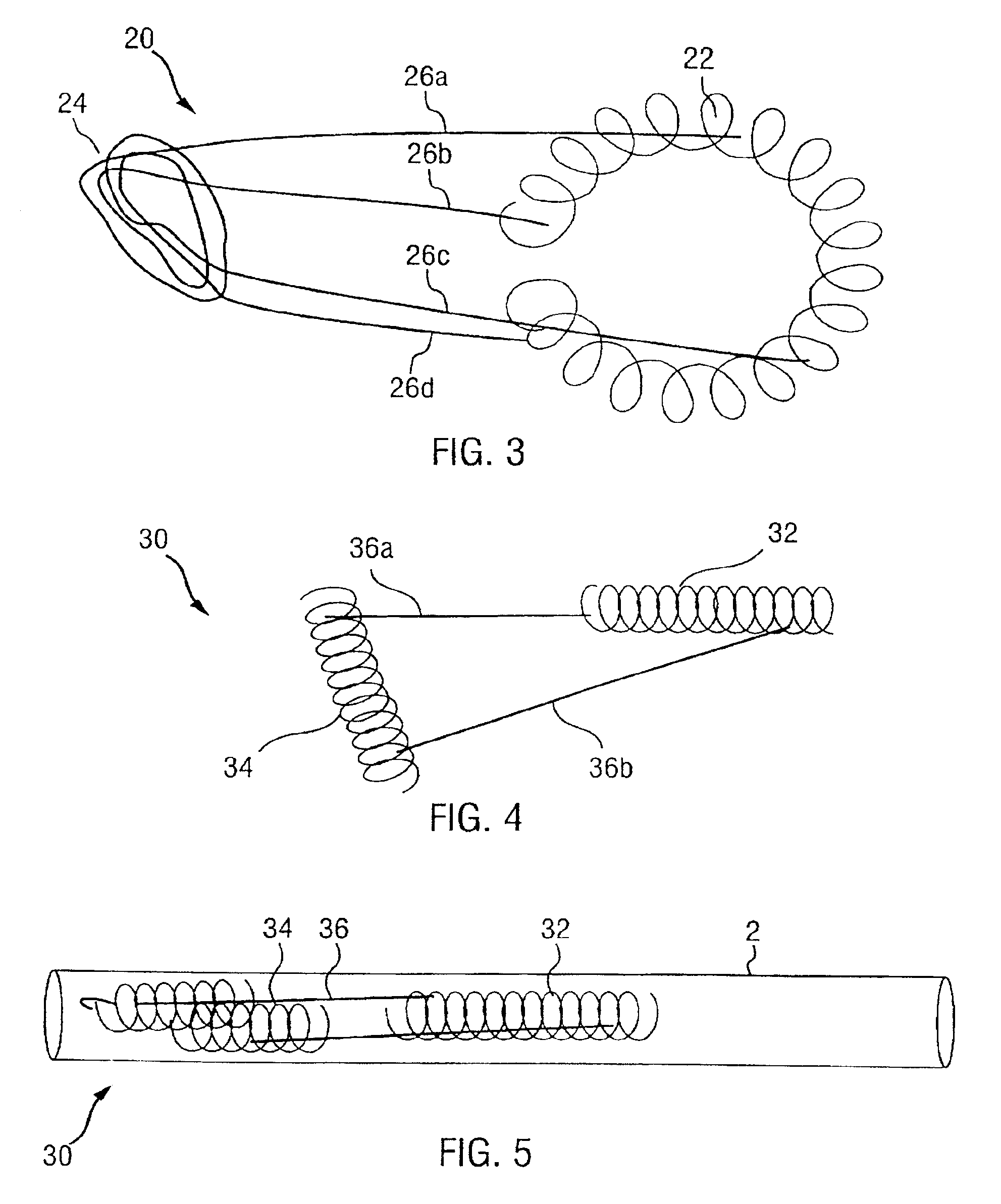Intravascular device
a technology of intravascular device and lead element, which is applied in the field of intravascular device, can solve the problems of reducing the risk of continued canalization or recanalization, and limited size, and achieves the effect of more precise localization of lead elemen
- Summary
- Abstract
- Description
- Claims
- Application Information
AI Technical Summary
Benefits of technology
Problems solved by technology
Method used
Image
Examples
first embodiment
[0037]The present invention relates to a multi-element intravascular occlusion device which overcomes many of the disadvantages in the prior art. FIGS. 1 and 2 illustrate the device 10 in both a compressed and a deployed configuration. The device 10 comprises an anchoring element 12 and a lead element 14 connected by fibers 16, wherein both elements are coils. An introducing catheter 2 is used to place the device 10 into a blood vessel. As the device 10 is placed in the vessel, the anchoring element 12 deploys and lodges against the wall of the vessel. The blood flow carries the lead element 14 distally up to the length of the fibers 16. Blood clots form around the anchoring element 12, the fibers 16 and the lead element 14 to occlude blood flow through the vessel.
[0038]The potential shape of the coils are unlimited. Currently, numerous configurations of coils exist. For example, a “Gianturco coil” by Cook, Inc. includes multiple turns into a spring-like shape. Another coil, the Flo...
second embodiment
[0042]FIG. 3 illustrates occlusion device 20 which represents the present invention. The occlusion device 20 comprises an anchoring element 22 and a lead element 24 connected by fibers 26a, 26b, 26c, 26d. The anchoring element 22 comprises a coil similar to that shown in FIG. 2. The lead element 24, however, is formed by an intermeshing of fibers 26. The distance between the lead element 24 and the anchoring element 22 can be controlled both by the length of the fibers 26 and the location at which the fibers are intermeshed. The fibers 26 may be held together by a knot, or by some other means such as glue.
[0043]The lead element 24, as illustrated, acts like a thrombosis producing particle. Therefore, the lead element 24 can be any other thrombosis producing particle such as polyvinyl alcohol, silicone polymer, protein particles, glass beads, latex beads, or silk suture material.
third embodiment
[0044]FIGS. 4 and 5 illustrate occlusion device 20 which represents the present invention. Again, the occlusion device 30 comprises an anchoring element 32 and a lead element 34 connected by two fibers 36a, 36b. Both the lead and anchoring elements 32, 34, are shown as straight coils. As shown, fiber 36a is shorter than fiber 36b. Both fibers can be attached to any part of either element. Fibers 36a and 36b are attached to opposite ends of each coil. By varying the numbers of fibers 36 and where they attach the other elements, the behavior of the lead element 34 can be altered.
[0045]The mechanism of delivery for device 10, 20, 30 can incorporate any of the currently available mechanisms. These include either mechanical pushing of the coil through the introducing catheter 2 by a guide wire, injection of the coil using saline or other liquid to wash it from the introducing catheter 2, or use of a detachment apparatus which allows for controlled delivery or withdrawal. Utilization of t...
PUM
 Login to View More
Login to View More Abstract
Description
Claims
Application Information
 Login to View More
Login to View More - R&D
- Intellectual Property
- Life Sciences
- Materials
- Tech Scout
- Unparalleled Data Quality
- Higher Quality Content
- 60% Fewer Hallucinations
Browse by: Latest US Patents, China's latest patents, Technical Efficacy Thesaurus, Application Domain, Technology Topic, Popular Technical Reports.
© 2025 PatSnap. All rights reserved.Legal|Privacy policy|Modern Slavery Act Transparency Statement|Sitemap|About US| Contact US: help@patsnap.com



